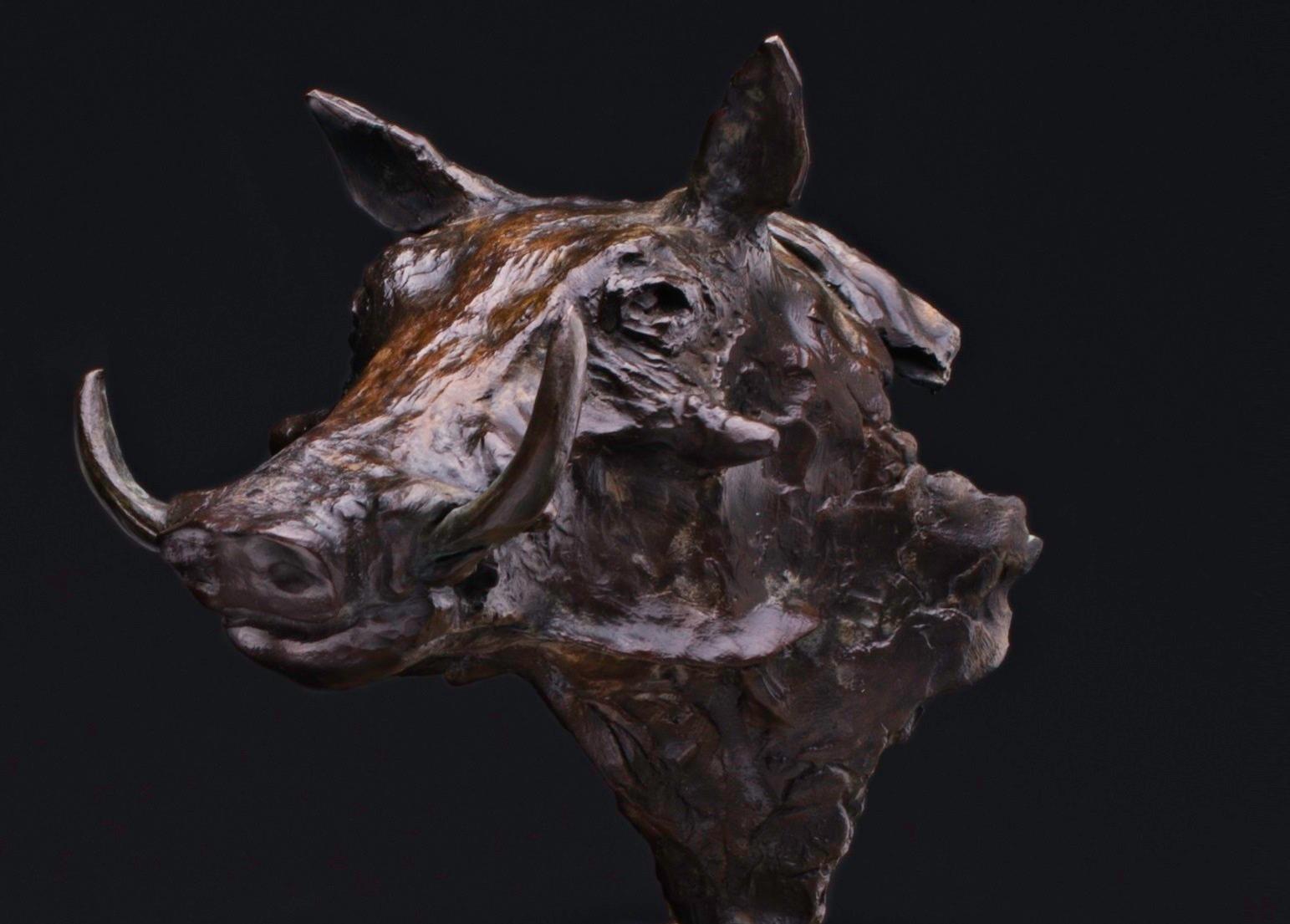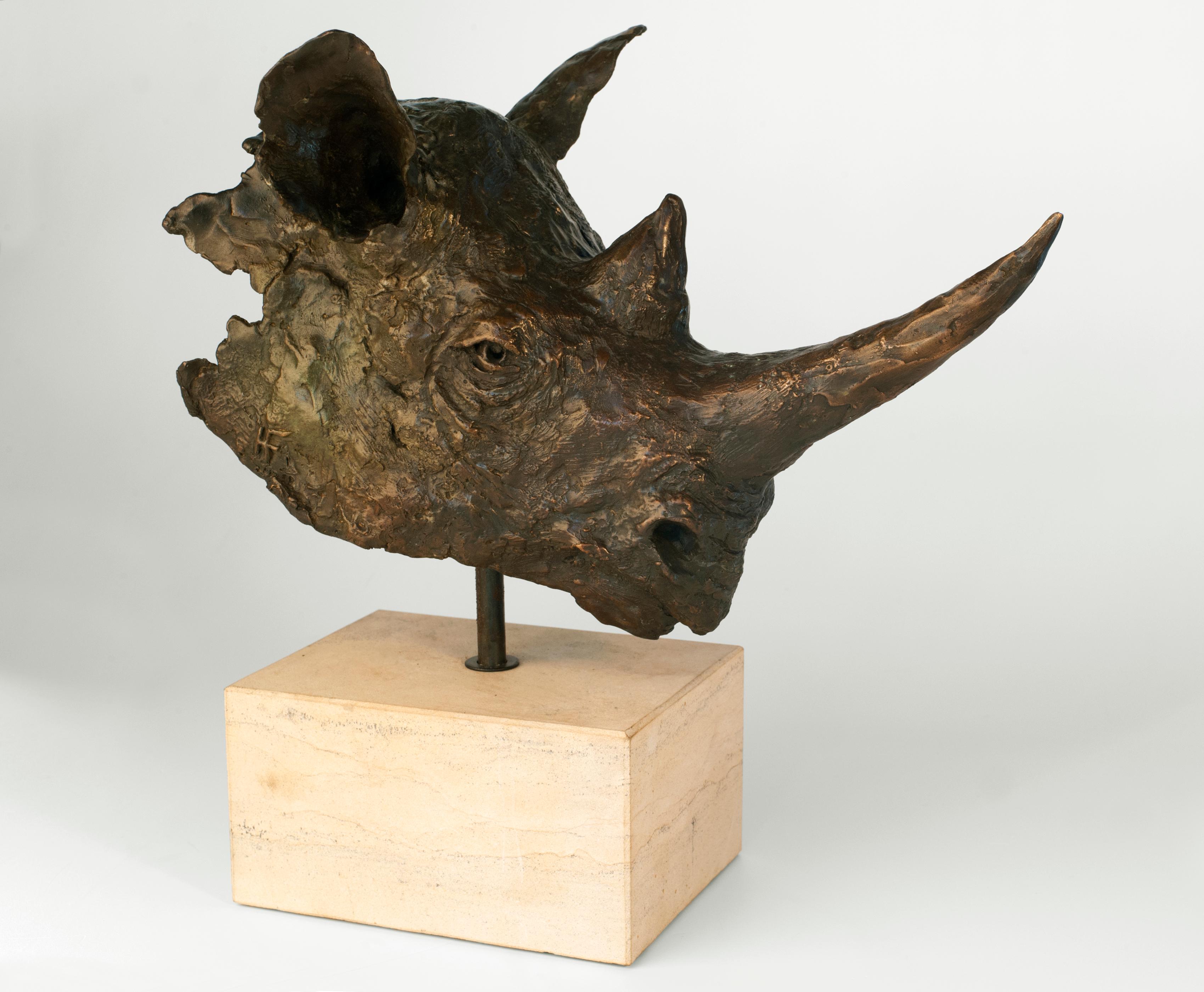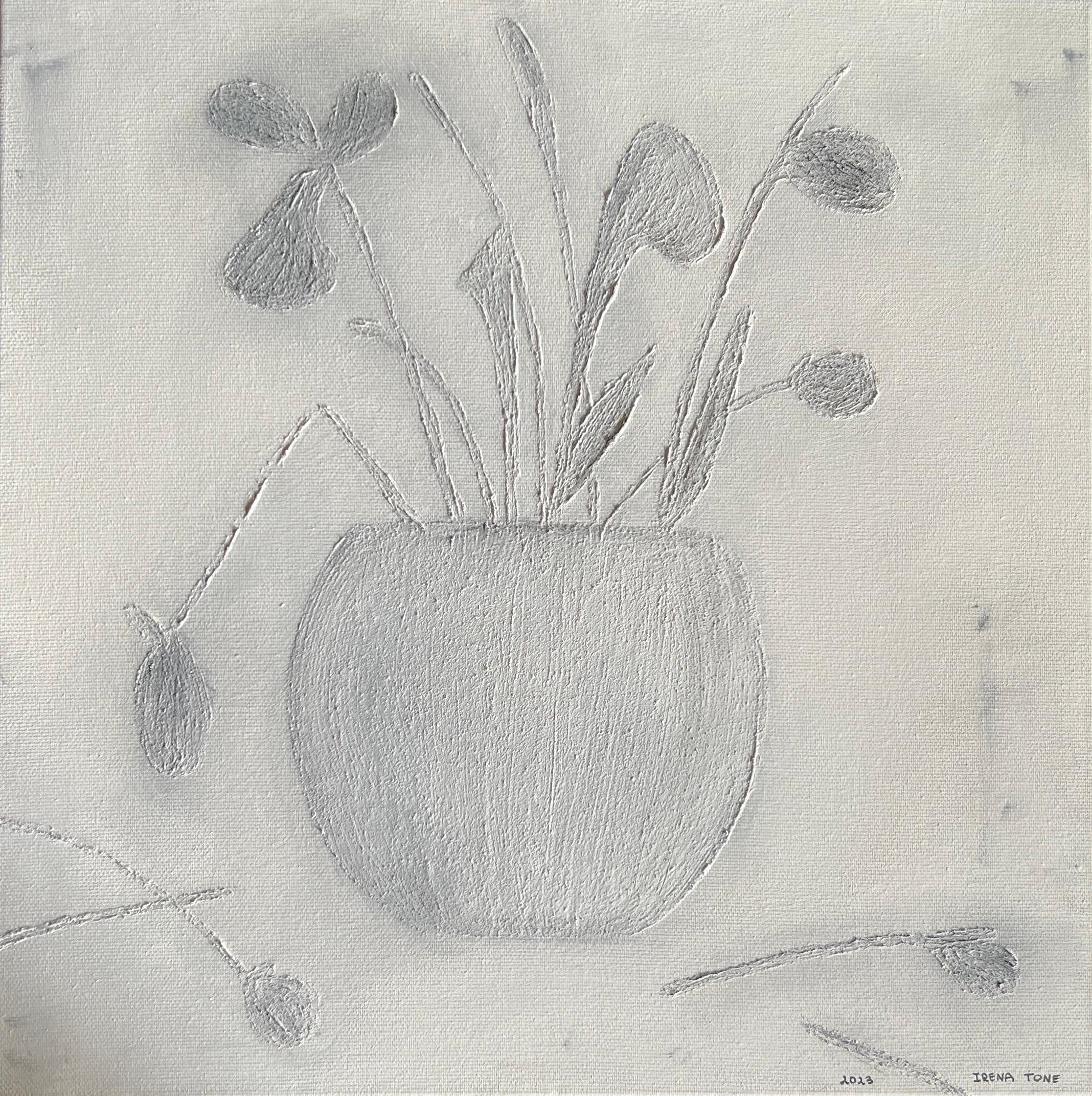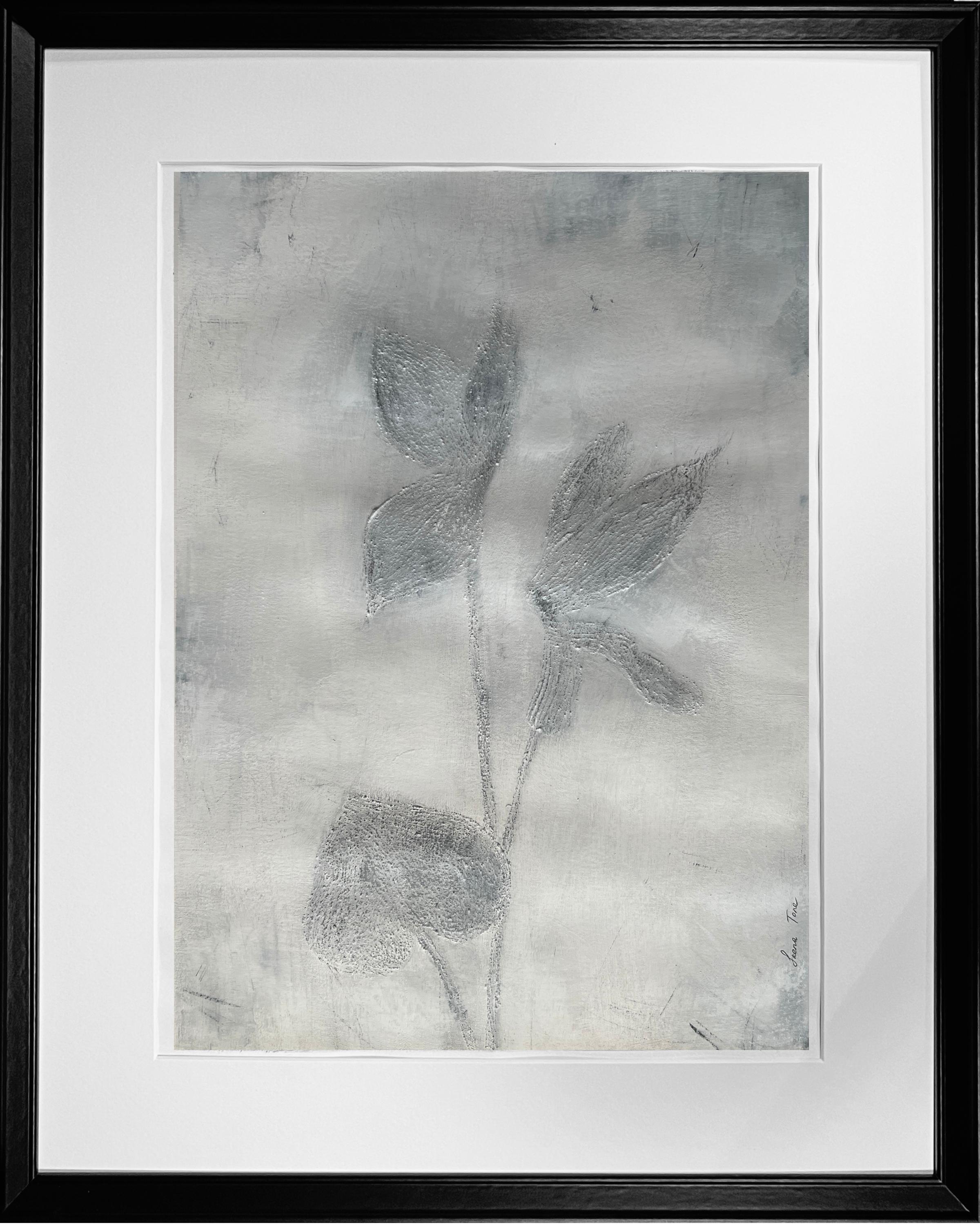Items Similar to Standing Engel
Want more images or videos?
Request additional images or videos from the seller
1 of 6
UnknownStanding Engel1450/60
1450/60
About the Item
Standing angel with banner
Flemish
Around 1450/60
Sandstone
60 x 21 x 15 cm
This museum figurine shows a standing angel with a banner in his right hand and a small box in his left. The youthful, ageless figure wears a coat held together with a triangular, floral brooch in front of the chest over a long robe. The angel’s gaze is directed forward, his head tilted slightly to the left. The elongated face is sculpted: the large almond-shaped eyes with accentuated upper and lower eyelids are alertly open and sharp eyebrows lead directly into the root of the nose. The straight nose above the pronounced mouth completes the idealized oval face of the angel and his calm, internalized facial expression. What is particularly remarkable, however, is the magnificent curls, which are only partially tamed by a simple headband. As if puffed up by the wind, the hair, which is sometimes streaked in parallel, sometimes wildly twisted and richly curled, stands out dynamically from the ears. The tilted head with these sideways protruding waves of hair thus conveys an immediate impression of movement. The physicality of the sculpture is expressed particularly through this organic, lifelike movement of the loosened hair.
The lively overall impression of the figure is further enhanced by the multiple rolled banners that the angel presents to the viewer. The outstretched palm of the right hand appears both intimate and confidential as well as mystically revealing. This banderole winds in gentle curves in front of the figure’s body, throws a fold over the second attribute in the angel’s left hand and falls downwards in a loose manner. The volute-shaped rolled up end of the banner clearly shows the fine texture of the banner and at the same time draws the viewer’s attention to the small cube-shaped box that the angel is holding in its slender, long-limbed fingers. The cube is decorated with a Gothic quatrefoil motif, which is often seen in the architectural tracery of windows, but was also often used to decorate caskets and other small treasures. The sweeping gestures in the presentation of the attributes suggest three-dimensionality, in contrast to the tubular folds at the base of the neck and the intricate draperies in flat and multiple overlapping garment sections. The soft curves of the folds give the impression that the clothing is made of a heavy fabric that falls diagonally down the front and is laid in several bowl folds under the right hand.
Overall, the sculptural work testifies to the highest artistic skill, which emphasizes the virtuosity of sculpture in its precious and representative overall impression. The memorable characteristics recognizable here can be seen in comparable pictorial works from Utrecht around the middle of the 15th century, when sculptural art – especially stone sculpture – was characterized by a remarkably high quality. Particularly noteworthy is the accentuated Utrecht head type with an elongated oval face, almond-shaped eyes with heavy lids and dense, vividly protruding tufts of hair framing the head. For example, the figure is comparable to a capital of an angel on the east side of the rood screen of the Joriskerk in Amersfoort (province of Utrecht) from the second quarter of the 15th century. Not only the physiognomy and hair, which in the comparative example stand somewhat more horizontally to one side, but also the garment puff above the girdle are similar. Even more related motifs, such as the cleverly placed bowl folds, can be found on the limestone figure of St. Mary. Agnes around 1450 (Centraal Museum Utrecht 1788-003). The hair is also fanned out at the sides of the head in a similar bouffant style. The situation is similar with the protective mantle image of a Saint. Ursula around 1460-70 made of oak (Amsterdam Begijnhof, chapel), whose hair appears to be “stacked” uniformly around her head. However, the hair in the comparative example appears less animated and therefore more restrained; the bowl folds also appear deeper and more angular than in the angel presented here. The angel can therefore be placed stylistically between Agnes and Ursula. Later works, such as a crest-bearing angel console made of oak around 1475 (Teutonic Knights, Ballei Utrecht, German House), show separate strands of hair running parallel downwards, which already appear to be covered in Mannerism. The hair on a limestone fragment of an angel from around 1480 (Leiden Stedelijk Museum de Lakenhal B145) is also more uniform and symmetrical than on the angel presented here. The same type of head can also be seen in two angels with the Arma Christi made of oak from around 1490 (Essen, Marks-Thomée Collection), although here the hair far exceeds the volume of the small face and the drapery is also much more angular.
In its choice of stone as a medium, in the execution of the softly curved drapery and in the representation of the characteristic head type, the angel refers to the sculptural art of Utrecht around the middle of the 15th century. The figure most probably originates from an important Utrecht workshop, which at this time created playful, lively depictions with varied, naturalistic hairstyles, which were not only adopted in modified form by Utrecht sculptors of the late Gothic period, but also by sculptors from other regions, such as Jan Borman, an important Flemish master carver of the late Gothic period and the Dutch Renaissance from Brussels.
- Creation Year:1450/60
- Dimensions:Height: 23.63 in (60 cm)Width: 8.27 in (21 cm)
- Medium:
- Period:
- Condition:
- Gallery Location:Wien, AT
- Reference Number:1stDibs: LU1143213902322
About the Seller
No Reviews Yet
Vetted Seller
These experienced sellers undergo a comprehensive evaluation by our team of in-house experts.
Established in 1986
1stDibs seller since 2019
- ShippingRetrieving quote...Ships From: Wien, Austria
- Return PolicyA return for this item may be initiated within 14 days of delivery.
More From This SellerView All
- Ancient DeityLocated in Wien, WienANCIENT DEITY Seated representation of God Southern Arabia Pre sabean 2nd - 1st millennium BC. Oolite limestone Height 24,5 cm Comparable works in the British Museum/London ...Category
15th Century and Earlier Figurative Sculptures
MaterialsLimestone
- Hl. HieronymusLocated in Wien, WienSt. Jerome 347 Stridon, Croatia - 420 Bethlehem Around 1500/20 Limestone Remains of the original polychromy Height 45 cm The man with the holy name! 347 Stridon, Croation – 420 Be...Category
16th Century Figurative Sculptures
MaterialsLimestone
- Corpus Christi "ascribed Veit Stoß"Located in Wien, WienMUSEUM CORPUS CHRISTI Nuremberg or Poland/Krakow Around 1490/1500 Workshop of Veit Stoß (1447-1533) ascribed Boxwood carved Height 31 cm This Corpus C...Category
15th Century and Earlier Figurative Sculptures
MaterialsWood
- Apostel groupLocated in Wien, WienAPOSTLE GROUP ORIGINAL VERSION Flemish/Brabant Around 1500 Oak wood carved Height 37.5 cm, width 12 cm, Depth 12.5 cmCategory
15th Century and Earlier Figurative Sculptures
MaterialsWood
- Sedes SapientiaeLocated in Wien, WienSedes Sapientiae Pustertal um 1220/30 Weichholz/Lindenholz(?)geschnitzt Reste von originaler Polychromie Höhe 57 cmCategory
15th Century and Earlier Figurative Sculptures
MaterialsWood
- Nok CultureLocated in Wien, WienNok culture Sitting 500 B.C. - 200 A.D. Terracotta Height 60 cm TL expert opinion of the University of Vienna Prof. Dr. Rudolf Erlach Provenance: Private collection NiceCategory
15th Century and Earlier Figurative Sculptures
MaterialsTerracotta
You May Also Like
- Warthog Bust - Bronze Wildlife SculptureLocated in Pretoria, ZABronze Warthog Bust on Sandstone base H 16 cm x W 13 cm x D 8 cm. Base size 8 x 8 x 4 cm. Edition 2 of 9 - ready for shipping. Meticulously crafted, this bronze artwork captures the ...Category
2010s Expressionist Figurative Sculptures
MaterialsSandstone, Bronze
- Black Rhino Bust - Bronze Sculpture - Limited EditionLocated in Pretoria, ZABlack Rhino Bust with brown green patina, Limited Edition of 12, bronze sculpture on Sandstone base. The first time I was sculpting in the field, all I saw oft this magnificent Black...Category
2010s Figurative Sculptures
MaterialsSandstone, Bronze
- For U, darling, grey metallic 2Located in Valencia, ESEvery artwork is hand-made and supported with a certificate of authenticity. Made in Spain, 2024. The frame is included. Package: protected cardboard box. Dispatching terms: 2-3 work...Category
2010s Abstract Figurative Sculptures
MaterialsSandstone
- Anthurium Black and WhiteLocated in Valencia, ESEvery artwork is hand-made and supported with a certificate of authenticity. Made in Spain, 2024. The frame is included. Package: protected cardboard box. Dispatching terms: 2-3 work...Category
2010s Abstract Figurative Sculptures
MaterialsSandstone
- 'Foggy Flowers Bouquet' Black and WhiteLocated in Valencia, ESEvery artwork is hand-made and supported with a certificate of authenticity. Made in Spain, 2023. Package: protected cardboard box. Dispatching terms: 2-3 working days. Location an...Category
2010s Realist Still-life Paintings
MaterialsSandstone
- 'Cyclamen Flowers' Black and WhiteLocated in Valencia, ESEvery artwork is hand-made and supported with a certificate of authenticity. Made in Spain, 2023 The frame is not included. Package: protected cardboard box. Dispatching terms: 2-3...Category
2010s Abstract Still-life Paintings
MaterialsSandstone
Recently Viewed
View AllMore Ways To Browse
Standing Figurative Sculpture
Figural Standing Sculpture
Large Standing Sculpture
Standing Stones
Antique High Hair
Architectural Fragment Sculpture
15th Century Stone Sculpture
Fragment Head
Two Angels Sculpture
Antique Banners
Bowl Sculpture Large
Drapery Sculpture
Triangular Sculpture
German 15th Century
Large Stone Head Sculpture
15th Saint
15th Century Sculpture Head
Hair Strand





